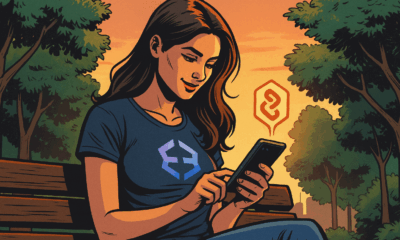Cardano
Brave Embraces Cardano: A Major Leap for Web3 Wallet Integration
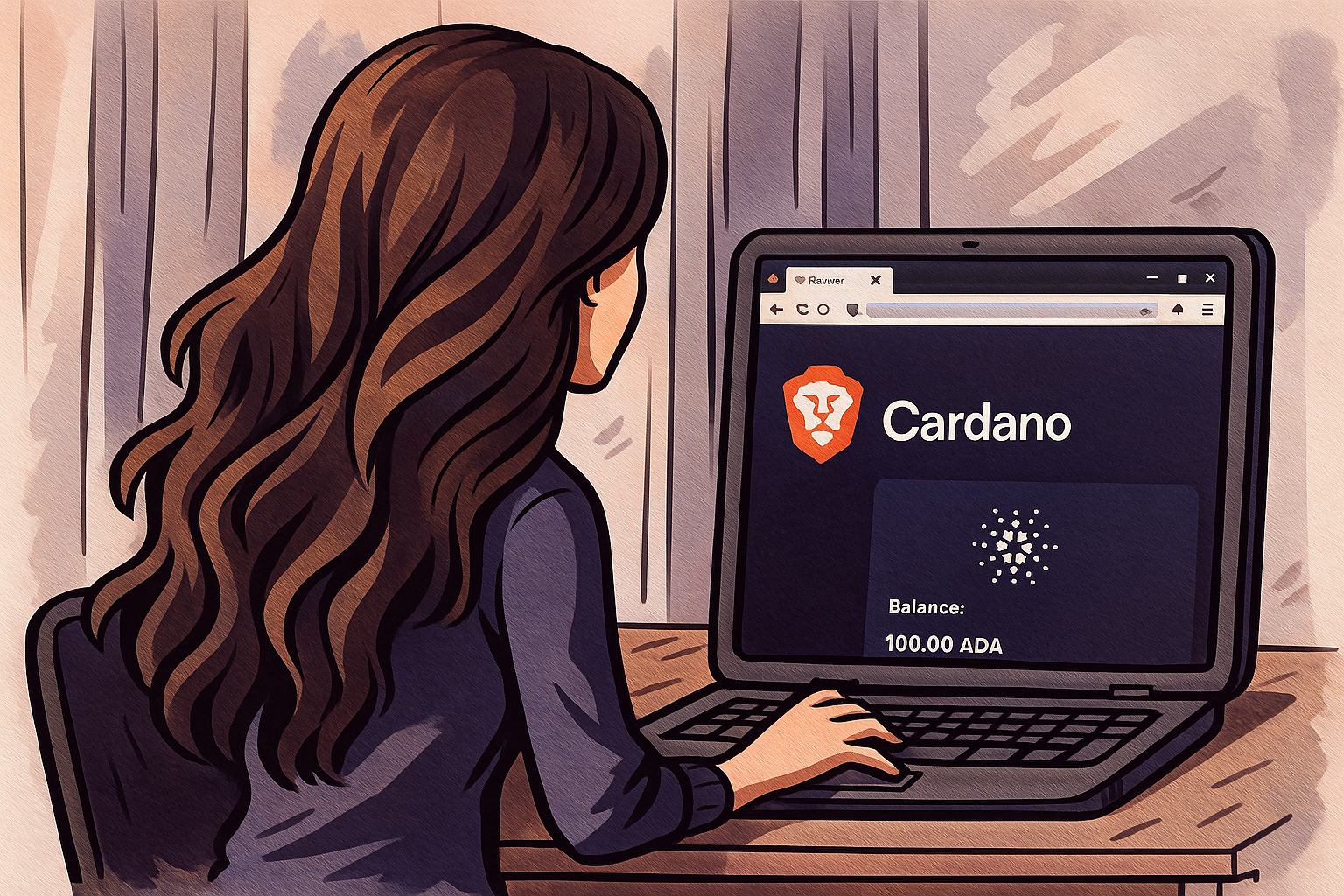
- Share
- Tweet /data/web/virtuals/383272/virtual/www/domains/theunhashed.com/wp-content/plugins/mvp-social-buttons/mvp-social-buttons.php on line 63
https://theunhashed.com/wp-content/uploads/2025/10/brave2-1000x600.png&description=Brave Embraces Cardano: A Major Leap for Web3 Wallet Integration', 'pinterestShare', 'width=750,height=350'); return false;" title="Pin This Post">
In a quiet but significant step forward for multi-chain wallet infrastructure, Brave has rolled out native support for Cardano in its built-in crypto wallet. This update means that users can now manage ADA and Cardano-native tokens, perform swaps, and even participate in on-chain governance — all without ever leaving the Brave browser. It’s a milestone that not only broadens Brave Wallet’s utility but also deepens the vision of a seamless, browser-native Web3 experience.
The announcement, tucked into a blog post by Brave, reveals more than just a technical integration. It points to a broader shift in how crypto tools are converging with everyday digital interfaces. Brave is making a calculated bet that the future of blockchain interaction will be as natural and integrated as opening a new browser tab.
A Native Web3 Gateway: Why Integration Matters
Crypto wallets have come a long way since the early days of clunky browser extensions and standalone desktop apps. While those tools served their purpose, they introduced layers of complexity — from installing and updating plugins to managing private keys across disconnected platforms. Brave, which has long pitched itself as a privacy-first browser, began to blur the lines between browsing and blockchain by introducing its own native wallet. Now, with Cardano joining the lineup of supported blockchains, Brave is reinforcing its goal of being a unified portal into the decentralized web.
The Cardano integration enables Brave users to generate Cardano addresses directly within the browser, manage ADA and other native assets, and perform token swaps — all through a single interface. This isn’t just about convenience. By embedding these capabilities into the browser itself, Brave removes the friction that typically deters new users from interacting with blockchain ecosystems. No extensions, no third-party downloads, no extra steps.
This move also helps Brave solidify its position as a true multi-chain wallet. Cardano joins an existing roster that includes Ethereum, EVM-compatible networks, Zcash, Filecoin, and others. With this integration, Brave continues to blur the lines between browser and wallet, and in doing so, it helps lower the barrier to entry for millions of users who may be crypto-curious but not yet crypto-committed.
Unlocking the Cardano Ecosystem
The technical integration unlocks a range of capabilities for Cardano users. Brave Wallet now supports the full suite of Cardano-native assets, allowing users to send, receive, and hold ADA along with any other tokens issued on the network. Users can also execute token swaps directly from within the wallet, simplifying the process of exchanging one Cardano asset for another without relying on external DEX interfaces.
Perhaps most intriguingly, Brave Wallet enables users to participate in Cardano’s on-chain governance. Cardano has long promoted itself as a self-governing, community-driven blockchain, and native governance participation is one of its cornerstones. With Brave Wallet, users can now engage in voting and other protocol-level decisions directly from their browser, further democratizing the governance process and expanding participation.
The integration is also timely for users interested in Midnight, Cardano’s new privacy-focused sidechain. Midnight, which aims to introduce data protection and confidentiality features to the Cardano ecosystem, is preparing to distribute its native token, NIGHT, through a program called the Glacier Drop. To claim NIGHT, users must prove control of a wallet and provide a Cardano address. With Brave now supporting Cardano natively, users can complete this process entirely within the browser — no additional wallet setup required.
This level of integration removes several technical and psychological hurdles. For users participating in Midnight’s token drop, Brave Wallet offers a streamlined experience: generate a Cardano address in seconds, claim the tokens, and manage them all from one dashboard. That’s a sharp contrast to the often fragmented, confusing process that characterizes many other crypto airdrops.
The Upside and the Underlying Risks
There are clear advantages to Brave’s native, multi-chain wallet strategy. Chief among them is reduced friction. By eliminating the need for external extensions or apps, Brave simplifies crypto onboarding, particularly for newcomers. A user can go from installing the browser to transacting on Cardano in a matter of minutes, without navigating the often intimidating labyrinth of crypto wallets and network settings.
Privacy is another key strength. Brave’s browser already blocks trackers and ads by default, and the wallet inherits that privacy-centric ethos. The fact that users can interact with Cardano — and other chains — without exposing their data to third-party wallets or platforms is a meaningful win for those who value anonymity and control.
But this tight integration is not without its trade-offs. The more functionality a browser consolidates, the higher the stakes become in terms of security. A vulnerability in Brave Wallet could expose assets across multiple chains, potentially putting users at greater risk than if they used isolated wallets. Browser-based wallets also raise questions about how well security practices scale across diverse blockchains with unique architectures and threat models.
There’s also the question of decentralization. Some crypto purists may balk at the idea of relying on a browser — even one as privacy-minded as Brave — as their main interface with the blockchain. They may prefer lightweight, open-source wallets where they can inspect the code and manage their keys independently. Brave Wallet, while user-friendly, operates with more abstraction, which could obscure certain risk vectors for less technical users.
Regulatory risk is another lurking factor. As Brave builds out its wallet into a full-featured, cross-chain hub, it potentially invites greater scrutiny from regulators, especially in jurisdictions that have begun to draw distinctions between software wallets, custodial platforms, and financial intermediaries. Offering native governance and token swap features might raise eyebrows among lawmakers still trying to understand the contours of decentralized finance.
A Step Toward the Web3 Future
For the Cardano community, Brave’s integration is a clear sign of growing momentum. It exposes ADA and other Cardano-native assets to Brave’s large user base, which now numbers over 100 million monthly active users. That kind of reach can dramatically expand Cardano’s visibility and utility, particularly among casual users who might not have otherwise explored the network.
For Brave, the move strengthens its long-term thesis: that the browser is the ideal launchpad for Web3. By baking wallet functionality into the core browsing experience, Brave hopes to make blockchain interaction feel as native and intuitive as the web itself. If successful, this model could reshape how users think about crypto — not as a separate activity requiring special tools, but as a natural extension of everyday internet use.
And for users, the Cardano integration signals a more coherent, less fragmented future. Crypto’s promise has always been about decentralization and user empowerment, but the tools have often made those ideals hard to access. Brave’s approach — consolidating multiple chains into a single, private, user-friendly wallet — helps bridge that gap. It won’t eliminate all of crypto’s complexities, but it does make it easier for users to engage meaningfully with blockchain ecosystems, whether they’re sending tokens, claiming airdrops, or voting on the future of a network.
What Comes Next
Brave’s support for Cardano is likely just one step in a broader evolution. As the wallet adds more chains and features, the browser could become the de facto interface for Web3 — a one-stop shop for assets, apps, and identity. That vision hinges on Brave’s ability to maintain security, scale across different networks, and continue delivering on its promise of user privacy and control.
If it succeeds, the Brave browser won’t just be a gateway to the internet. It will be the operating system for the decentralized web.
Cardano
Solana co‑founder publicly backs Cardano — signaling rare cross‑chain respect after 2025 chain‑split recovery
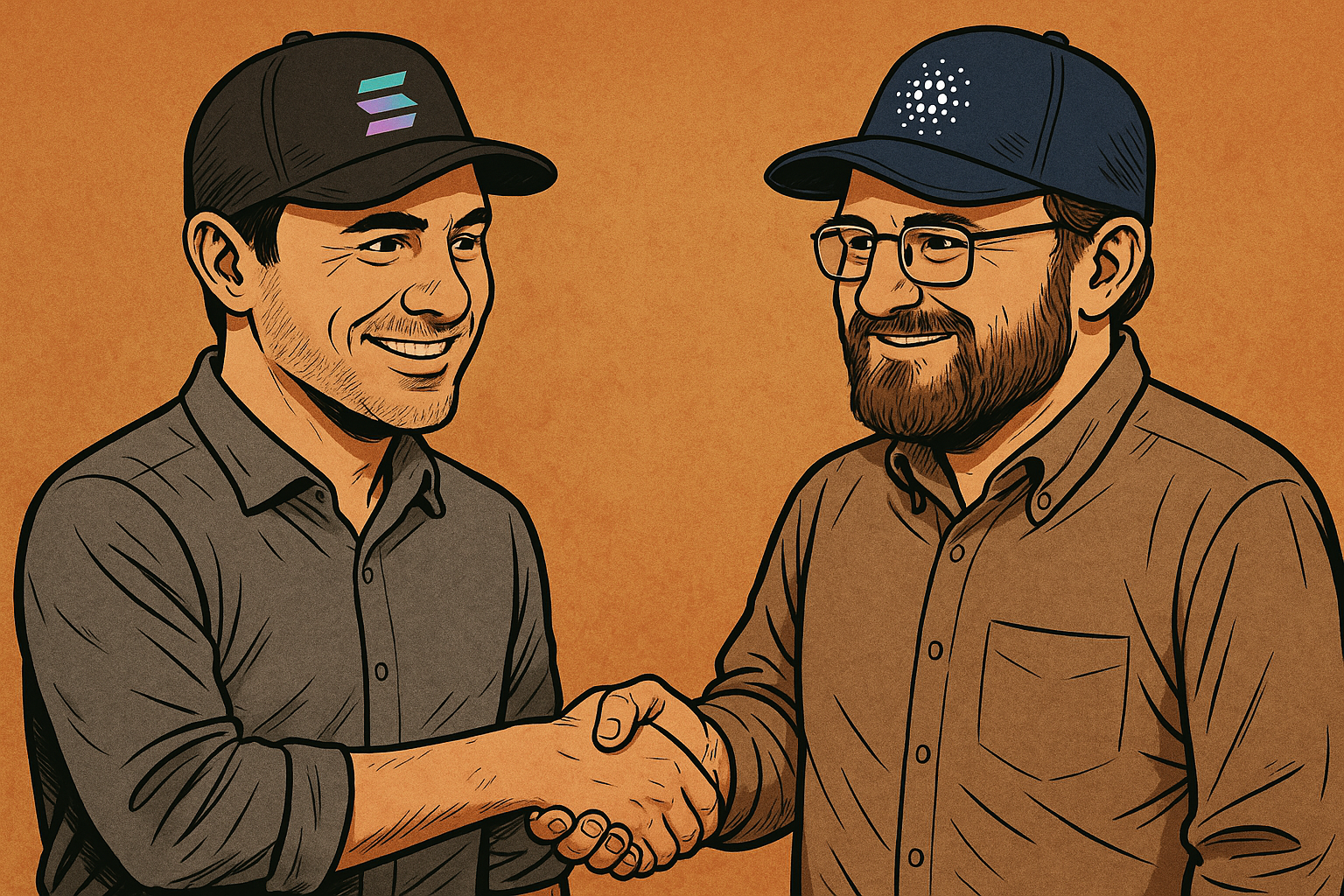
From Incident to Validation
In a development that surprised many in the blockchain world, Solana co-founder Anatoly Yakovenko publicly praised Cardano following its recent chain-split incident. What could have been a blow to Cardano’s reputation instead became an unexpected moment of validation — not just from within its own ecosystem, but from one of its most prominent rivals.
The Split That Wasn’t a Stop
On November 21, 2025, Cardano experienced a technical divergence caused by a malformed transaction. The issue stemmed from a bug in the serialization and deserialization logic of its node software — a deep protocol-level vulnerability. Some nodes processed the transaction as valid, while others rejected it, resulting in two competing forks of the blockchain running simultaneously.
But here’s the critical part: Cardano never stopped. The Ouroboros consensus mechanism kept producing blocks on both forks. And once the problem was identified, developers rapidly issued a patch. Stake pool operators upgraded their nodes in a matter of hours, and the network converged back onto a single canonical chain — no hard fork, no downtime, no loss of funds.
Yakovenko’s Unexpected Endorsement
Shortly after the incident, Solana’s Anatoly Yakovenko weighed in with a surprising take. He acknowledged that creating a Nakamoto-style consensus without relying on energy-intensive Proof-of-Work is “extremely hard to build” — and concluded that Cardano “actually nailed it.” He called the network’s recovery after the split “pretty cool.”
This kind of comment matters. It wasn’t just a technical compliment — it was a recognition from a competitor that Cardano’s foundational architecture, often criticized for being slow-moving or overly academic, delivered exactly what a blockchain is supposed to do: it kept running, adapted, and healed itself.
The Design Behind the Recovery
Cardano’s recovery didn’t happen by luck. It’s the product of years of research-first development: a layered architecture, formal verification, and the Ouroboros consensus engine designed specifically to prioritize security and resilience.
Most importantly, the resolution didn’t depend on a central authority stepping in. The “honest chain” prevailed through natural consensus. Operators coordinated globally without coercion. The update rollout was swift. The split was resolved without user impact beyond brief transaction slowdowns.
These are not small feats in a decentralized environment. They represent the kind of maturity that few chains — even large ones — have demonstrated under live pressure.
A Rare Signal in Crypto Culture
What makes this moment especially significant is that it cuts through the tribalism that usually defines blockchain communities. Yakovenko didn’t take a victory lap or criticize a competitor. Instead, he acknowledged a technical achievement — one that aligns, at least in spirit, with the broader mission of blockchain: decentralized systems that can withstand failure and continue operating trustlessly.
This is a sign that the blockchain space may be maturing. Cross-chain respect, while rare, is important. It suggests a shared understanding that competition shouldn’t come at the cost of ignoring good engineering when it happens — even on another protocol.
Reframing the Narrative Around Cardano
For Cardano, the incident — and the way it was handled — may redefine public perception. The network has long been portrayed as overly cautious, academic, or “too slow to ship.” But when put to the test, those same qualities may have enabled it to respond to a complex failure without chaos.
Cardano wasn’t flawless. But when failure came, it was recoverable. And that’s the real benchmark for a network that claims to be decentralized and secure. It didn’t just protect funds. It protected trust.
Final Thought
The blockchain space has seen its share of crises: bridges exploited, blockchains halted, forks forced under pressure. But Cardano’s chain split will likely be remembered not as a breakdown — but as a breakthrough. It showed that resilience in Proof-of-Stake is not only possible, but provable. And with respect coming even from Solana’s top leadership, it’s clear that Cardano’s architecture — often underestimated — is earning its place among the most battle-ready networks in the industry.
Cardano
Cardano Has Never Stopped — What the Chain Split Really Tells Us About Its Tech
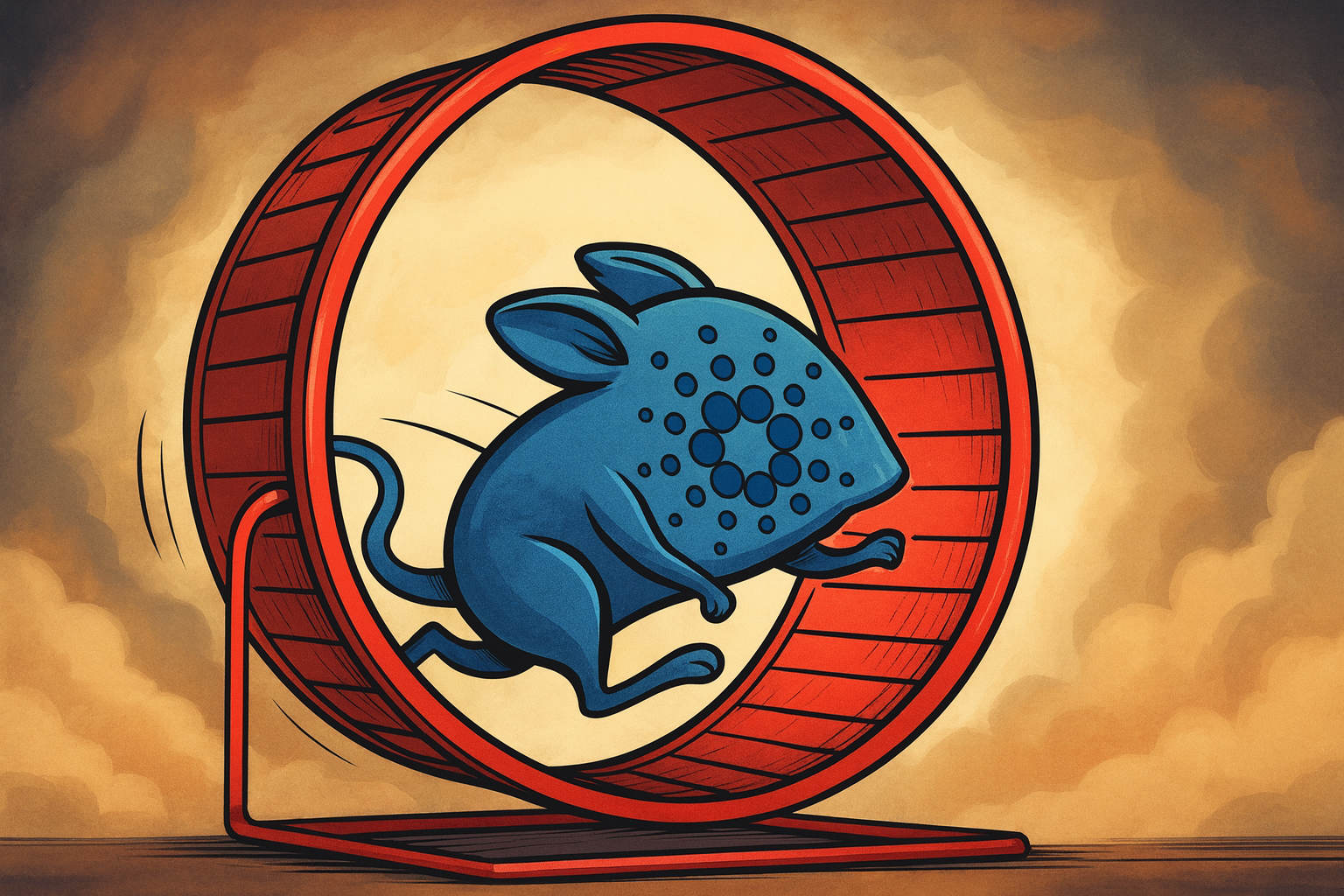
The Network Didn’t Fail. It Proved Itself.
On November 21, 2025, Cardano experienced what some feared might be a catastrophic event: a chain split. For about 14 hours, parts of the network diverged, with two versions of the blockchain running in parallel. But despite the panic and technical confusion, the result was clear—Cardano didn’t stop. The chain kept producing blocks, the network kept running, and the community coordinated a fix in real time. Far from exposing a flaw, the incident demonstrated just how solid Cardano’s architecture really is.
What Actually Happened: A Bug Meets an Edge Case
The chain split began when a malformed delegation transaction—created by an operator using AI-generated code—triggered a rarely encountered bug. The bug, which had been dormant in Cardano’s core software library since 2022, involved a discrepancy in how nodes processed transaction data during serialization and deserialization.
When this malformed transaction entered the network, some nodes interpreted it as valid while others rejected it. As a result, certain stake pool operators began building blocks on a forked version of the chain. This led to a temporary split: two incompatible chains running simultaneously.
Crucially, this was not a network halt. Cardano’s Ouroboros consensus algorithm continued to function. Blocks were still produced. Most users didn’t even notice the split until infrastructure like explorers, wallets, and exchanges began reporting inconsistencies. Transaction delays increased and around 3.3% of pending transactions were lost in the fork that was eventually discarded—but the underlying blockchain logic kept moving forward.
How Cardano Healed Itself
The recovery process was swift and decentralized. Core developers issued a patch to reject the malformed transaction type. Stake pool operators across the world upgraded quickly, voluntarily aligning with the correct version of the chain. No hard fork was required. No rollback or centralized intervention was needed. The protocol and the people around it did exactly what they were designed to do.
This recovery wasn’t just about code—it was about coordination. Cardano’s structure relies on a globally distributed group of node operators who can act independently but coherently. In this case, their rapid consensus allowed the network to self-correct in less than a day.
Why This Makes Cardano Stronger
Resilient systems aren’t the ones that never break. They’re the ones that recover quickly and accurately when they do. That’s exactly what happened here. Cardano faced a serious test, and it passed with its ledger intact and its community mobilized.
Rather than damage confidence, the event served as a validation of Cardano’s layered design and governance philosophy. It showed that even rare and difficult-to-detect bugs can be addressed within the existing framework. It also demonstrated that decentralization, when well organized, can outperform centralized systems in resilience.
Interestingly, even competitors took notice. The CEO of Solana—often seen as Cardano’s rival—publicly praised Cardano’s approach, acknowledging its strength in areas like formal verification and decentralized recovery. Such recognition from outside the ecosystem adds weight to the idea that Cardano’s fundamentals remain among the most robust in the space.
What It Means for Developers, Users, and Investors
For developers, the incident highlights the importance of safety in smart contract deployment. It also underscores the value of Cardano’s conservative, peer-reviewed approach to protocol changes. While some may criticize its pace, the trade-off for stability and recoverability is now clearer than ever.
For users, the key takeaway is trust. The network didn’t stop. Their funds remained safe. Their transactions, for the most part, were processed normally. And even when things went wrong, the fix didn’t rely on centralized authority—it relied on code and cooperation.
For investors, it signals maturity. Cardano didn’t implode. It didn’t require emergency governance. It didn’t pause block production. It endured, adapted, and continued. That’s more than can be said for many other blockchains in moments of crisis.
Final Word: Recovery Is Strength
Cardano’s chain split wasn’t a failure. It was a demonstration. It showed that robust protocol design, backed by a coordinated global community, can overcome unforeseen problems without permanent damage. No blockchain is immune to bugs—but few can claim they’ve weathered one this gracefully.
In a space where narratives often swing between hype and fear, the message from Cardano is simple and steady: even under pressure, Cardano has never stopped.
Cardano
Cardano Faces First‑Major Chain Split; Charles Hoskinson Involves FBI After Developer’s Experiment
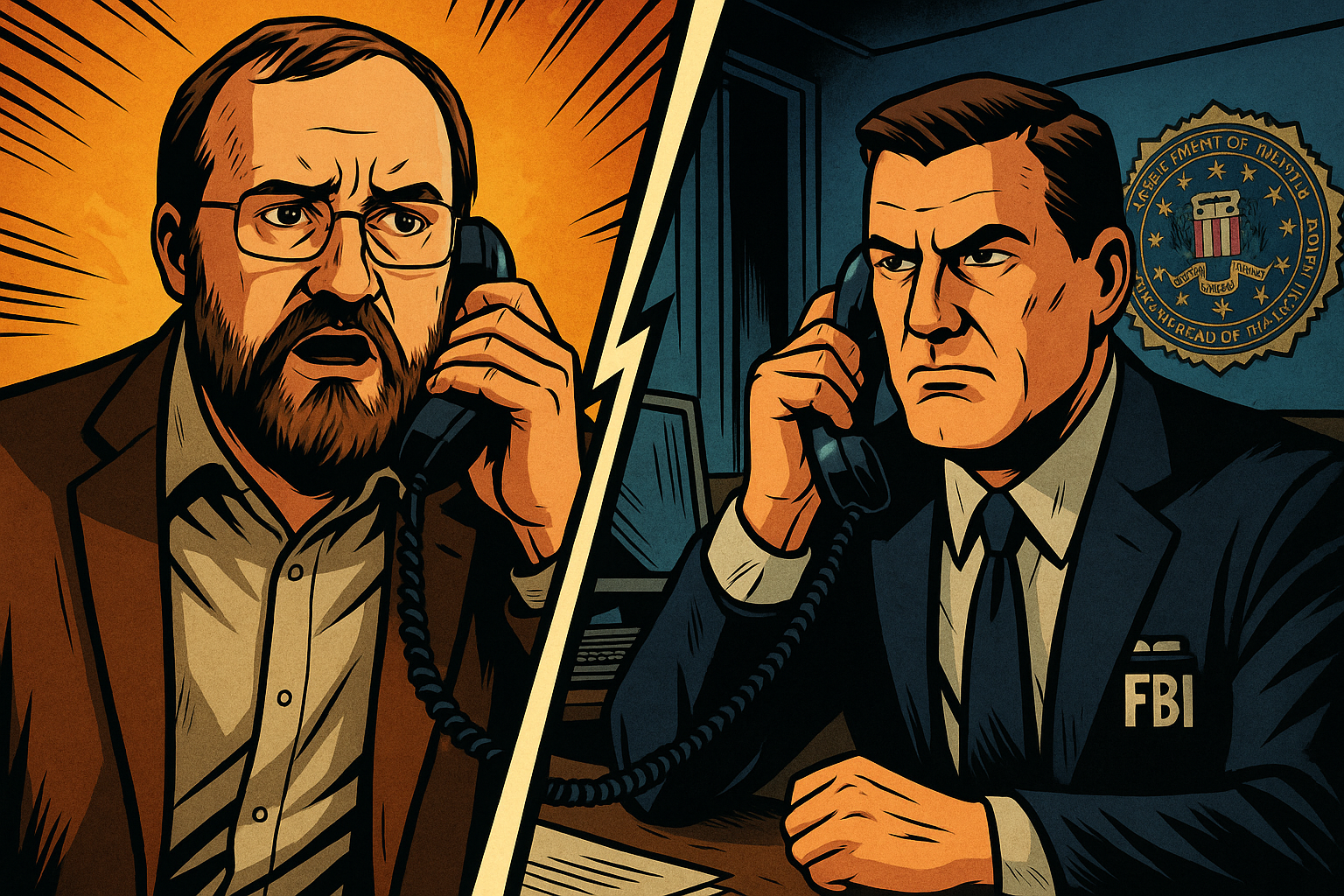
The blockchain world was shaken when Cardano suffered a temporary yet dramatic chain split on November 21, caused by a malformed delegation transaction that exploited a bug dating back to 2022. The culprit, a staking‑pool operator working under the alias “Homer J.,” later admitted the incident began as a personal challenge — he tried to reproduce a “bad transaction,” used AI‑generated instructions and inadvertently triggered a divergence in ledger history.
What happened on the chain
The split emerged when a delegation transaction passed validation in older node versions but was rejected by newer one, causing network nodes to diverge into two incompatible chains. Block production never stopped, yet exchanges paused operations amid the confusion. Emergency patches were deployed within three hours and the system converged back to a single chain by the next day. No user funds are reported lost so far.
Hoskinson’s response and legal implications
Charles Hoskinson described the incident as a “premeditated attack” rather than a simple error and confirmed that the U.S. Federal Bureau of Investigation is investigating the matter. He asserted that the operator “knows the FBI is already involved.” Meanwhile an employee of IOHK, Cardano’s lead development organisation, publicly resigned citing concerns about future legal consequences for development mistakes.
Market and ecosystem impact
In the immediate aftermath the native token ADA dropped by as much as 16 percent before stabilising. The broader narrative now hinges on governance trust, code‑audit rigour and the growing risk that even mature proof‑of‑stake networks can be shaken by obscure legacy bugs. The debate encapsulates one of crypto’s defining tensions: decentralisation versus operational risk.
What to monitor next
Attention will focus on whether Cardano can restore stakeholder confidence and sharpen its node‑software deployment processes. Will staking‑pool‑operators upgrade swiftly to the patched version? Will governance transparency improve? Also, regulators may begin paying closer attention to blockchain network incidents being treated as cyber‑attacks. And for ADA holders and developers, the key question remains whether network resilience can outpace reputational damage.
-

 Cardano2 months ago
Cardano2 months agoCardano Breaks Ground in India: Trivolve Tech Launches Blockchain Forensic System on Mainnet
-

 Cardano2 months ago
Cardano2 months agoCardano Reboots: What the Foundation’s New Roadmap Means for the Blockchain Race
-

 Cardano2 days ago
Cardano2 days agoSolana co‑founder publicly backs Cardano — signaling rare cross‑chain respect after 2025 chain‑split recovery
-

 Bitcoin2 months ago
Bitcoin2 months agoQuantum Timebomb: Is Bitcoin’s Foundation About to Crack?
-

 Cardano2 months ago
Cardano2 months agoAfter the Smoke Clears: Cardano, Vouchers, and the Vindication of Charles Hoskinson
-

 Cardano2 months ago
Cardano2 months agoMidnight and Google Cloud Join Forces to Power Privacy‑First Blockchain Infrastructure
-

 Ripple2 months ago
Ripple2 months agoRipple CTO David “JoelKatz” Schwartz to Step Down by Year’s End, but Will Remain on Board
-

 News2 months ago
News2 months agoRipple’s DeFi Awakening: How mXRP Is Redefining the Role of XRP





